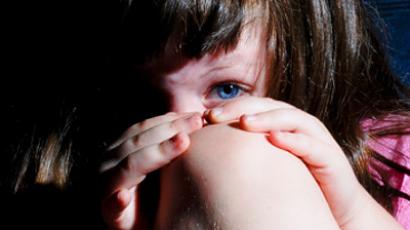False child prostitution report makes headlines

If you thought the recent statistic published by USA Today saying online sex trafficking of underage girls was on the rise at an astronomical rate was unbelievable, well, that’s because it was.
USA Today, the Houston Chronicle, the Miami Heard and other major outlets all published the results of a study released by the Women’s Funding Network that showed that juvenile prostitution was becoming an American epidemic. In the state of Minnesota alone, the number of underage girls trafficked online was said to have gone up over 60 percent in only six months.These figures all came after the Women’s Funding Network’s Chief Program Officer Deborah Richardson testified at a September hearing of a subcommittee of the House Judiciary. Richardson rattled off a slew of statistics to a roomful of lawmakers and the numbers quickly trickled down to the mainstream media. The thing is, no one investigated Richardson’s claims any further. Not until a reporter at Denver’s Westword tried to tackle the data. In March, writer Nick Pinto looked into the allegations and found out something equally as alarming. “It’s junk science.”“The numbers are all guesses,” he writes.The Schapiro group, an Atlanta-based business-consulting operation, was brought on board to conduct the initial survey by the anti-prostitution group A Future Not Past. The Group isn’t made up of any researchers and certainly no experts in street walking. That’s why they took to the not-so-scientific system of browsing online ads for female escorts and counting the “young-looking” women to get to their statistic.Pinto looked into the methodology used in the study and discovered that figures were determined using a formula put together by Schapiro. "The study showed that any given 'young' looking girl who is selling sex has a 38 percent likelihood of being under age 18…Put another way, for every 100 'young' looking girls selling sex, 38 are under 18 years of age. We would compute this by assigning a value of .38 to each of the 100 'young' girls we encounter, then summing the values together to achieve a reliable count."If you made it past pre-calc, you’ll know that none of that makes sense.Journalism professor Steve Doig spoke to Pinto and offered a rather accurate analogy: "Consider this: Imagine that 100 people were shown pictures of various automobiles and asked to identify the make, and that 38 percent of the time people misidentified Fords as Chevrolets. Using the Schapiro logic, this would mean that 38 percent of Fords on the street actually are Chevys."Pinto also got the people behind the study, A Future For A Past, to outright admit to their play on words. "We pitch it the way we think you're going to read it and pick up on it," says the group’s director, Kaffie McCullough. "If we give it to you with all the words and the stuff that is actually accurate—I mean, I've tried to do that with our PR firm, and they say, 'They won't read that much.'"If that isn’t convincing enough, maybe just look at it this way: the information was obtained from browsing Craigslist ads. And, from there, “guessing” their age.And that, unfortunately, is how USA Today got their news.Schapiro Group founder Beth Schapiro made claims that her study was the first ever attempt to “scientifically” pin down a statistic for juvenile prostitutes. As Pinto points out, however, her study actually footnotes several other studies. When Rusty Parker, the study’s leader, was quizzed by Pinto, his answers failed to verify the validity of the scientific study. When asked where he got the pictures used in the survey, he couldn’t recall. And how did the researchers know the actual age of those in the sample pics? "Um…I'm afraid I do not remember," he told Pinto. Schapiro starts to explain, "We're the first to tell you, this is not a precise count of the number of girls being prostituted . .. We make no bones about that." She retreats quickly, however, and changes her story."Well, yes, these are specific numbers," Schapiro backpedals. "And yes, they are hard numbers, and they are numbers that we stand completely behind."After the falsity of the study was first revealed, Schapiro issued a press release: “In an area with no proven methodology, The Schapiro Group developed a series of logical assumptions upon which to base an admittedly conservative count of the number of young females being prostituted.”Scientific studies are conducted in order to prove or disprove logical assumptions. Basing “science” on guesses—not testing them—isn’t science. It’s a crap shoot. A lottery. A blind guess.Were they close? Maybe if they were to conduct an actual survey we’d be able to tell. Instead, the mainstream media bought Schapiro’s bait hook, line and sinker. Their little study has become the mass media’s version of the carnival weight- and age-guessing game. Nobody even won a stuffed animal. And USA Today? They are fit for the dunk tank.














